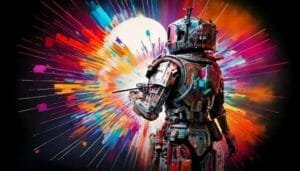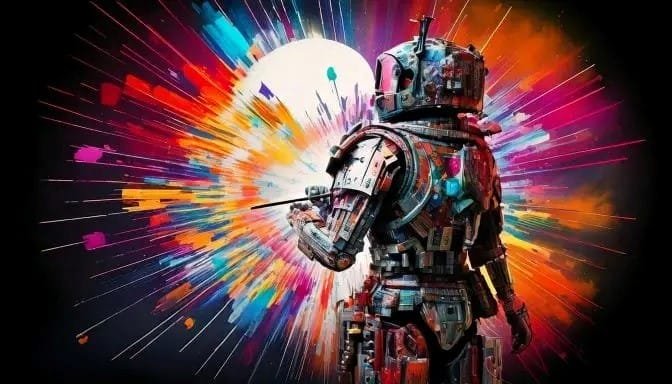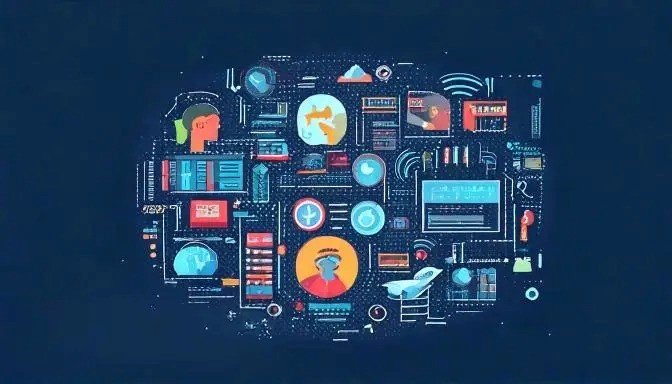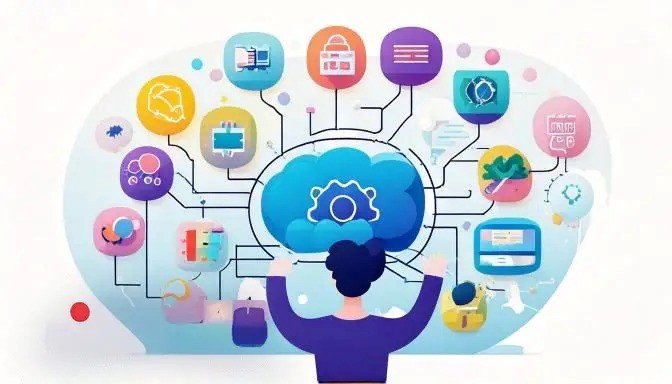The Future of AI and Motion Graphics: A Visual Revolution
In its essence, motion graphics has been about animating otherwise, dead pictures, and telling a story and gaining attention. Owing to the enhancing application of Artificial Intelligence (AI), a revolution in the visual domain is under preparation. The application of AI in motion graphics has the next significant stage symbolised by individuality and greater effectiveness. This is where we will focus this article, by outlining how motion design is on course to be revolutionized by AI.


What is AI and Why Does it Matter for Motion Graphics?
Technically speaking, Artificial Intelligence can be simply described to be an ability of machines to operate like humans. This encompasses functions such as learning, solving and decision-making.
In the case of motion graphics, therefore, the artificial intelligence is not a tool to replace human imagination but to support it. For the first, let’s put AI in no other than an assistant kind of role; doing uninteresting jobs, creating thoughts and helping artists with new tools. And that which will define the future of visual storytelling is this combined effort between mankind and artificial intelligence.
How AI is Already Making Waves in Motion Graphics
While the full potential of AI in motion graphics is still unfolding, we’re already seeing some fascinating applications:
- Automated Animation: Neural networks can learn how to derive animations from the audio tracks – this means that work can be done in two ways. This greatly enhances the rate at which one can develop lip synchronization characters or visualizers for music.
- Smart Templates: New platforms are being developed, and they include templates in a machine learning and AI powered motion graphics. These templates can be easily edited with a few clicks so even individuals with little or no background on animation can create high quality animation.
- Style Transfer: It is also important to understand that AI methods for processing graphic images can explain the style of a certain artist or a piece of art and use it for other patterns. This simply means opening up great possibilities in designing one of kind and harmonizing esthetic appeal visually.
- Content-Aware Fill: Likely identical to features in graphic designing software, AI can smartly complete portions of a video or animating process that are otherwise difficult to alter or remove.
The Future: AI’s Transformative Role in Motion Design
The best of AI in motion graphics are yet to be seen. Here’s what we can expect in the coming years:
1. Hyper-Personalized Content:
It will allow the creation of motion graphics in response to individual viewers. Imagine:
- Dynamic Ads: Ads which switch in response to the location of the client or their profile, as well as their current state of mind – captured by facial recognition software or other similar mechanisms.
- Interactive Storytelling: Animated movies that change depending on the decision made by the audience, leading the client to a unique experience.
- Personalized Educational Content: Explaining and instructing videos that use faster and slower instruction and the analogical teaching level according to the learners’ knowledge level.
2. Real-Time Animation and Rendering:
To a great extent, real-time rendering of complex motion graphics is still a hours or days process. AI promises to revolutionize this:
- Faster Rendering: By utilizing AI algorithms the time to process the rendering to produce better animations can be greatly reduced.
- Real-Time Adjustments: Think about having an opportunity to turn into a scene in a motion graphic and change something and see the effect immediately, which is useful in designing.
3. AI-Powered Idea Generation and Design Assistance:
AI won’t just execute tasks; it will become a creative partner:
- Concept Generation: With AI, one could either develop self-writing scripts or briefs and the platform would be able to provide ideas regarding what type of visuals to put or what color schemes to use or what kind of animation should be used.
- Automated Storyboarding: Using AI, it is emerging that future work could involve the creation of initial storyboards from text input to give some starting point to an animator or artist.
- Intelligent Design Feedback: AI could take a look at motion graphics and tell the motion designer or director how they can make the flow better, how the pace is, and how clear the motion graphics are.
4. Democratization of Motion Graphics:
AI will make motion graphics more accessible than ever before:
- User-Friendly Tools: AI platforms will help make its creation easier, and within the easy-to-understand reach of nearly everyone who is unable or unwilling to work with complex animation software.
- Affordable Solutions: Technology and the usage of technology in the creation of motion graphics will put downward pressure on the cost, which will make it possible for SMEs and solitary operations to engage the services of a motion graphic designer.
5. Enhanced Accessibility:
AI can help make motion graphics accessible to a wider audience:
- Automated Captioning and Audio Descriptions: New developments in AI can create captions and audio descriptions for videos to make the content easier for anyone who is deaf or hard of hearing or has vision disabilities.
- Language Translation: It can translate text, and also adjust the design of motion graphics for a different culture.
Challenges and Considerations:
While the future of AI and motion graphics is bright, there are challenges to consider:
- The “Uncanny Valley”: And the closer we get to the real, AI-generated characters and animations look less real and viewers finally get uncomfortable as with undeveloped real people – that’s the so-called ‘uncanny valley”.
- Job Displacement Concerns: As we speak, some experts are worried that AI can perform some functions that are typical of motion graphics artists. But, AI can probably open new possibilities to job creating, and artists should probably learn how to solve new tasks.
- Ethical Considerations: This paper articulates the following ethical concerns in relation to AI in the generation of motion graphics: ownership of ideas and asserting ownership of originality; and the ability of utilizing this technology to generate deepfakes of individuals.
The Future is Collaborative:
The future of AI and motion graphics is not what humans as well as machines. It’s about collaboration. Artificial intelligence will become one of the unprecedented tools that can help artists create, inspire them, and expand the scope of their stories to more and broader audiences.
Embracing the Change:
For motion graphics artists, the key to thriving in this evolving landscape is to embrace lifelong learning:
- Develop AI Literacy: AI tools’ strengths and weaknesses.
- Focus on Creativity and Storytelling: These skills will remain uniquely human which will be crucial.
- Learn to Collaborate with AI: To avoid adoption failure, AI needs to be viewed as what it really is – a helper and not a competitor.
Conclusion The Future of AI and Motion Graphics:
I believe that AI and motion graphics are quite relevant and together are forming a very active field. The future prospects of the motion graphics depend greatly on the benefits that the AI technology yields into the marketplace and the public domain of graphic designing. This revolution will come with new problems but also new opportunities for creativity enabling Motion Graphics as a more personalised, interactive and available form of communication than ever before.
Hence, human approach to this change should begin now so that brief collaboration between people and AI will create the best possible future for the VFX. That means the future of motion graphics is not only animated anymore, it’s Interactive and I promise, it’s something that you will be excited to see. They are needed to get ready for this change to come, and start looking forward to what the future is going to present the audience.


